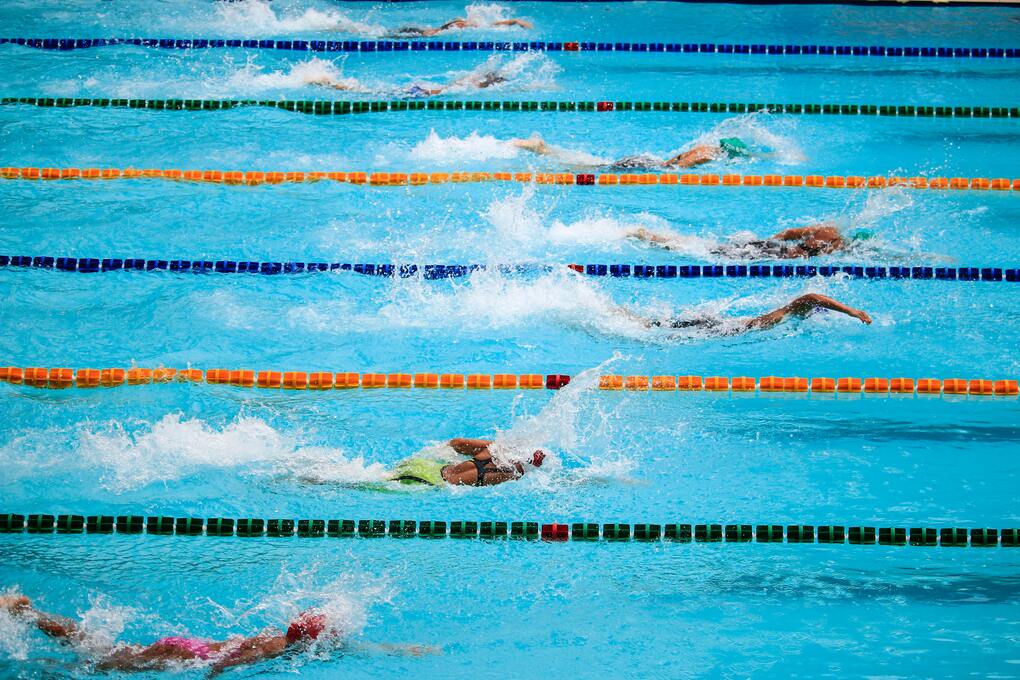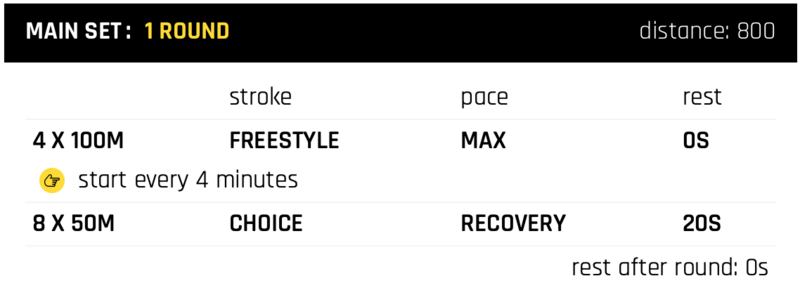Swimming blog - SwimGym Benchmark Workouts: test where you're at!
To become better at anything, tracking progress is a necessity to make sure you’re heading in the right direction. A benchmark workout allows you to track progress, by giving you a clear sense of your baseline. By repeating this benchmark regularly you can compare your results revealing growth or weaknesses that need attention. From endurance, to speed, we have the perfect benchmark workout for you!
Benchmark workouts explained
A benchmark workout is intended to test your current level of endurance, speed or skill. During a benchmark workout: (1) you must go all out, (2) record/keep note of your score (your time), (3) and redo exactly the same workout when you repeat it in the future. Every time you repeat the test, you can compare to your previous score, which helps you to track progress over time.
It’s best to do a benchmark workout when you’re starting off (again) or when you return back after an injury, this is your baseline score. After one to three months off training you repeat the benchmark workout to see whether you’re actually progressing. You keep on repeating the benchmark workout with the same regularity to measure further progress.
Benchmark workouts are extremely motivating. It’s really empowering to see your score go down after a period of serious training. And whenever you don’t feel like training a day or two, you have the benchmark workout coming up next month that encourages you to train. Stick to your training is necessary, if you want to see progress. A benchmark workout therefore holds you accountable on days needed.
Before you get started
With a benchmark workout you’re testing your current level. To get the most accurate understanding of where you’re at you have to give everything you have and leave nothing in the tank. Be well rested and fueled before your benchmark workout and whenever you're repeating the workout try to be consistent. Do the workout at the same time of the day, have the same fuel before your workout, keep the same warm up and give the same effort.
Don’t forget to bring your notebook and stopwatch (if your pool doesn’t own one) to time yourself and keep note of your score. Ready for some real challenge! Let’s go!
Endurance Benchmark: The Grant
The Grant is a 1500 freestyle timetrail named after the Olympic legend Grant Hackett who dominated this distance for 2 decades, setting the world record at 14 minutes and 34 seconds. Tactics for the 1500 is to swim at a speed you’ll be able to hold onto for 1500. Start easy with focus on exhaling, try to power up after 500, and add some speed after 1000. Keep focussing on stroke length, especially when you become fatigued. Manage your energy well, you rather be careful at the beginning, then collapse completely halfway the time trail.

(For the complete workouts, including warm ups and cool down: click on the main sets!)
Individual Medley Benchmark: Medley Madness
Medley Madness is all about measuring your strength (and weaknesses) on the four strokes. It’s a 50 all out butterfly, backstroke, breaststroke and freestyle with plenty of rest in between the 50’s. You can compare the timescore of the different strokes to each other to see where your strengths lie. Normal order of speed is: freestyle (fastest), butterfly, backstroke and breaststroke (slowest). Drag is the number one enemy regardless of the stroke. If you want to become faster in any stroke you should work on streamlining. Streamlining is introduced in the warm up, implement it every time you push off the wall with the all out sprints. Are you ready for some madness?
Speed Benchmark: SwimGym Challenge
.jpg)
The SwimGym Challenge is an excellent way to test your speed. It’s 100 and 50 freestyle all out for time. How should you pace these two sprints? Build up the distances wisely. During 100 freestyle try to maintain a constant pace and stroke rate for the first 75 and increase it for the final 25, your effort should be progressive. The best plan for a 50 is to sprint from start to finish, aim to use the fastest possible stroke rate in which you can keep your technique, or else your stroke will falter and so will your speed. Ready for the challenge?
Pacing Benchmark: 4 by 4
The 4 by 4 benchmark will teach you how to pace yourself when you're doing multiple reps of 100m all out. It also shows you how conditioned you are at the moment of execution, with an increase in conditioning your recovery after a 100m will be quicker and so will your score for this workout. The slowest 100m is your score, the challenge is to have the fastest slowest 100. You have to pick a strategy to pace the 4 x 100 so that the slowest of the 4 will be still “fast”. Give your all but pace yourself in such a way that you can hold that pace throughout the whole set.
Benchmark collection
These were just four off the many benchmark workouts we do at SwimGym. If you're hungry for more, head onto swimgym.com to find the benchmark collection, in which we have many more benchmark workouts just for you!




